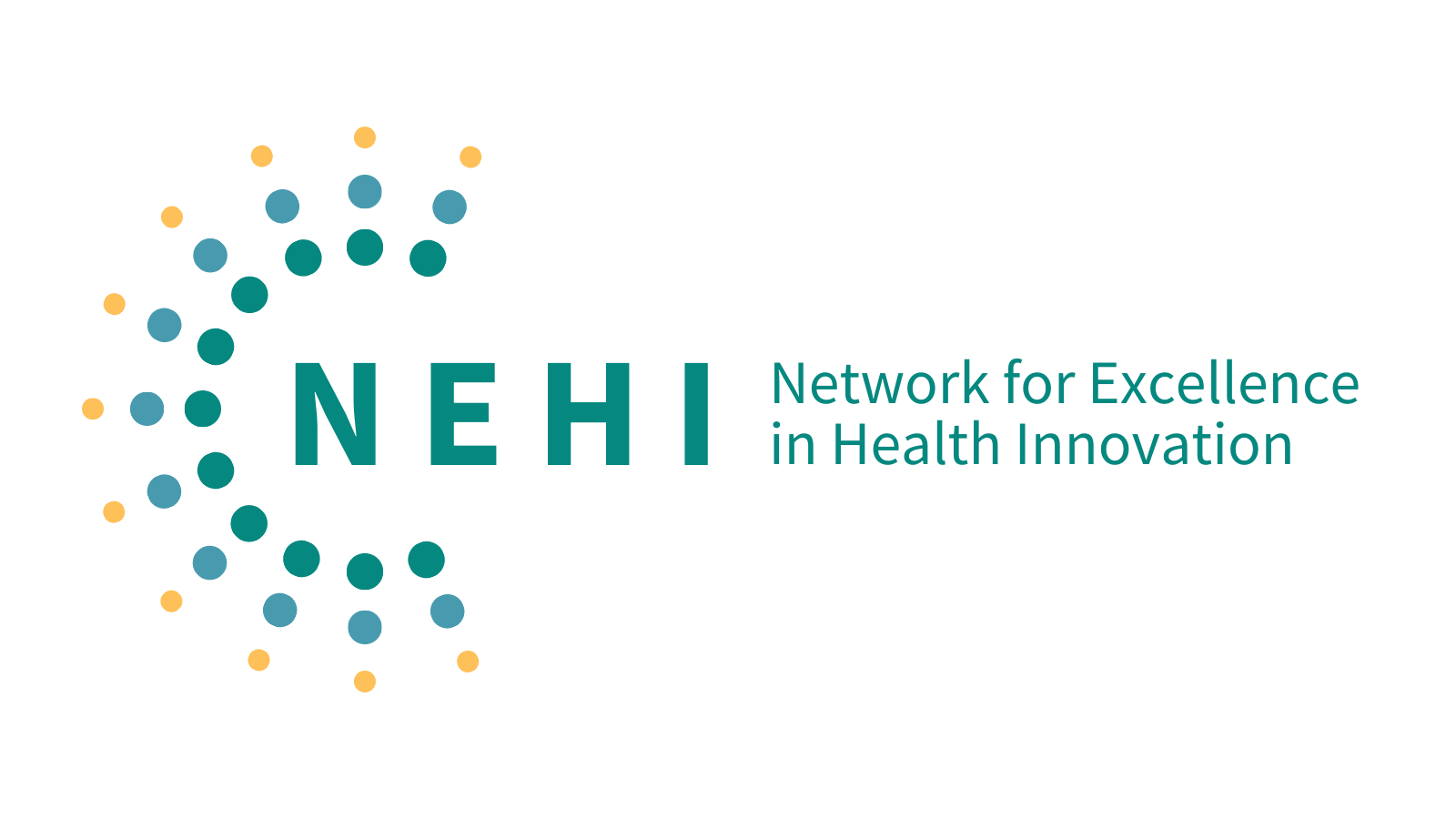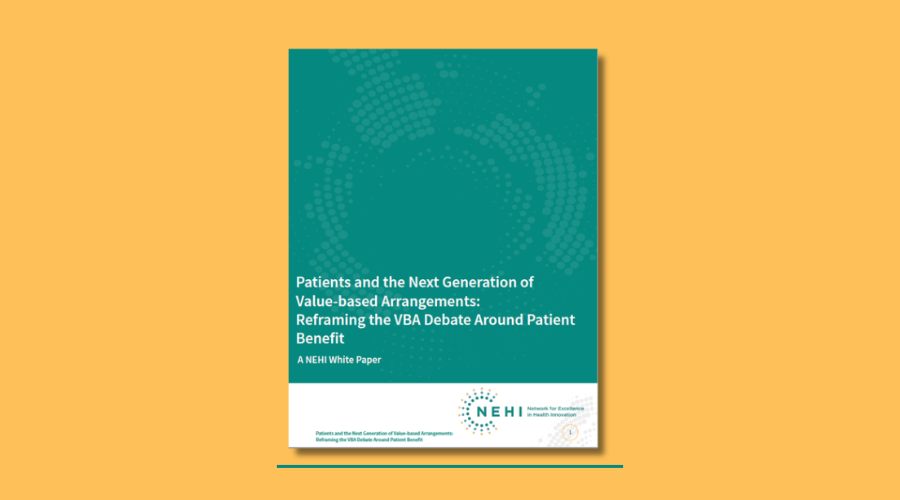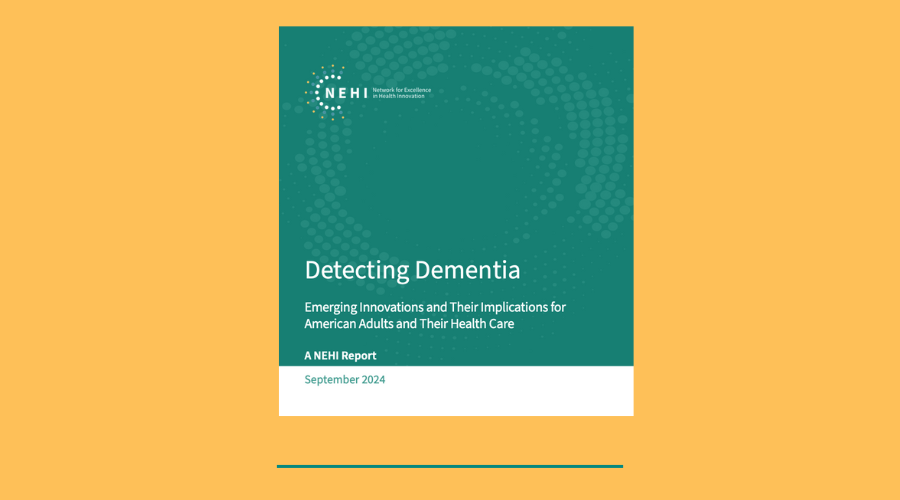Posted On October 13th, 2020
This NEHI white paper recommends building the “next generation” of value-based agreements around their benefits to patients.
Value-based arrangements (VBAs) between pharmaceutical manufacturers and health care payers have become a “tool in the payment toolbox,” but their impact may be limited unless the next generation of value-based arrangements are not only designed to achieve pre-defined clinical outcomes, but to achieve patient-centered health benefits as well.
This is the conclusion from a new NEHI white paper released today entitled, “Patients and the Next Generation of Value-based Arrangements: Reframing the VBA Debate Around Patient Benefit.”
“Value-based arrangements remain complex and expensive undertakings for many health care payers and manufacturers. As a result, they are utilized in narrow circumstances on a deal-by-deal basis. Nevertheless, we see continued interest in VBAs as vehicles that could be used more imaginatively to improve patient health and potentially offset avoidable health care costs,” said Tom Hubbard, Vice President for Policy Research at NEHI. “For that to happen, VBAs need to be defined around meaningful benefits to patients. Patient-focused VBAs should then be designed to provide reasonable support for patients, such as support for medication adherence and persistence, so that patients actually achieve better outcomes and fulfill the promise of the VBA.”
A patient-focused definition of VBAs remains essential because of wide agreement that federal regulations must be changed in order to accommodate more ambitious and innovative value-based arrangements. Formal definitions of VBAs outlined in Medicaid and Anti-Kickback Statute regulations will likely set the parameters for any expansion of VBA activity in both the public and private sectors.
The Centers for Medicare and Medicaid Services (CMS) proposed a VBA rule in June, but many Medicaid stakeholders believe the proposal is both too complex for Medicaid programs to benefit from it, and may put drug rebates paid to state Medicaid programs at excessive risk. The CMS proposal would define VBAs largely in terms of pre-defined patient outcomes and health care performance metrics. The NEHI white paper recommends that CMS go farther and define VBAs around a net benefit to patients. “At a time when innovative VBAs are often viewed as ‘juice not worth the squeeze’ by payers and manufacturers, and when Medicaid programs are under increasing fiscal stress, it seems that the best way to unlock the potential of VBAs is to define them explicitly around their impact on improving health,” Hubbard said.
The NEHI white paper also recommends that CMS create a “VBA Innovation Agenda.” The goal of the VBA Innovation Agenda will be to provide limited regulatory relief to payers, manufacturers and patient communities who propose to pilot innovative VBAs that create new patient health benefits, particularly among patients with conditions of high relevance to Medicaid programs. This could include VBAs for medications that treat behavioral and mental health conditions that are prevalent among Medicaid patient populations, and VBAs for medications that treat chronic conditions in which improvements are essential for meeting population health goals embraced by Medicaid programs and private payers alike.
NEHI CEO Wendy Warring commented that, “Our new white paper continues NEHI’s commitment to identifying innovations in technology, treatment, and payment models that improve the value the health care system delivers. Innovations are needed now more than ever as we continue to address the challenges that the pandemic has imposed.”
NEHI wishes to acknowledge the support of Eli Lilly for its VBA and patient stakes project. Recommendations in this white paper are based on NEHI research and multi-sector expert roundtables conducted in December 2019 and April 2020. NEHI is solely responsible for findings and recommendations made in the white paper.
For more information, please contact Tom Hubbard, NEHI Vice President of Policy Research, at thubbard@nehi.net.
Project Sponsors


.png?width=75&height=75&name=Download%20(5).png)


.png)

.png)
